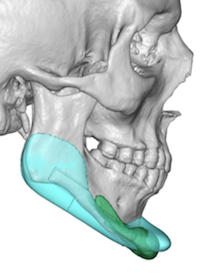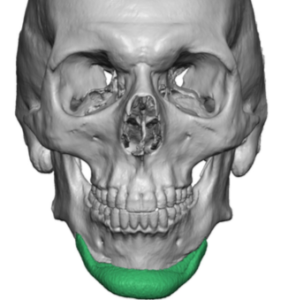Background: Chin augmentation using an implant is the most common form of facial augmentation. It has been around for over a half century and is generally thought of a straightforward procedure with a high success rate. And this is true when it is applied for modest chin deficiencies that are associated with no significant lower jaw deficiencies.
As the chin deficiency becomes greater, however, other issues arise that are not seen in more modest chin recessions. Larger chin deficiencies are associated with an overall lower jaw underdevelopment…which means the ramus of the lower jaw is vertically shorter. This makes the horizontal chin shorter but it also makes it vertically longer as the L-shape of the lower jaw is tilted up and back. Thus when placing a large chin implant on the end of the chin bone the augmentation effect is no longer purely horizontal. Some of the horizontal augmentation effect is lost by becoming more vertical, often creating a 30 or 45 degree type of forward chin augmentation effect.
Another interesting effect occurs in short lower jaws that have large chin implants placed…the chin can look out of proportion to the rest of the lower jaw shape. The chin, in essence, becomes ‘over augmented’ while the larger two-thirds of the lower jaw behind it remains structurally deficient. This is what I call ‘chin-jaw’ disproportion’. The surgery has become over focused on the most easily and well known treatable part of it, the chin. The jawline/angles behind it remain narrow and high, often with a high mandibular plane angle with a now protruding chin.
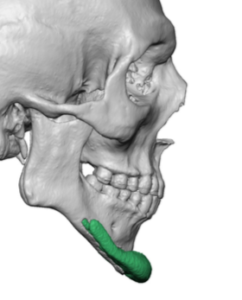
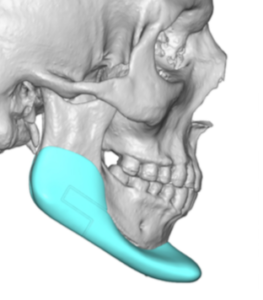
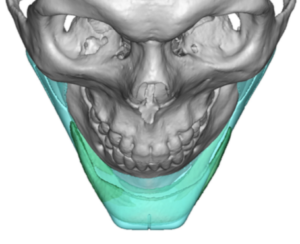
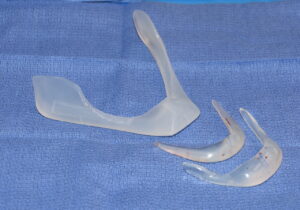
Case Highlights:
1) Large chin augmentations often reveal an underling jaw deficiency by looking disproportionate.
2) Anytime a double-stacked chin implant is used to a sliding genioplasty that exceeds 12 to 14mms this is a sure sign of a significant lower jaw deficiency.
3) A custom jawline implant provides better lower facial proportions between the front and back end of the lower jaw.
Dr. Barry Eppley
Indianapolis, Indiana

